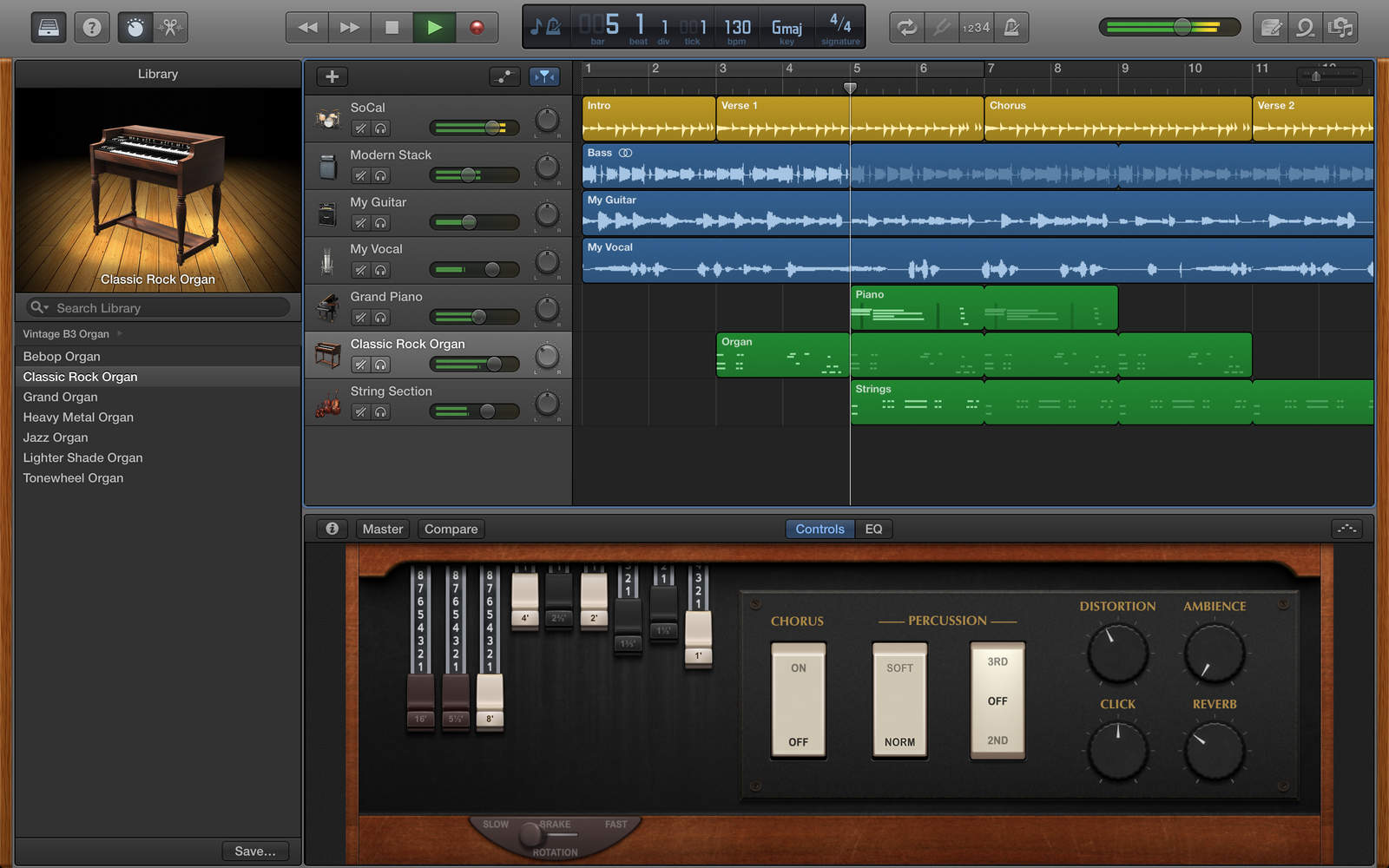Garageband Older Versions Mac
You can use GarageBand to create multiple tracks with pre-made MIDI keyboards, pre-made loops, an array of various instrumental effects, and voice recordings. If you happen to lose GarageBand files due to accidental deletion, app crash, hard drive corrupted, or other possible reasons, you can use the AutoSave feature and EaseUS Data Recovery Wizard for Mac to recover deleted or lost GarageBand files effectively.
You can use GarageBand to create multiple tracks with pre-made MIDI keyboards, pre-made loops, an array of various instrumental effects, and voice recordings. If you happen to lose GarageBand files due to accidental deletion, app crash, hard drive corrupted, or other possible reasons, you can use the AutoSave feature and EaseUS Data Recovery Wizard for Mac to recover deleted or lost GarageBand. Apple updated GarageBand 10 for Mac on March 20, 2014. Version 10.0.2 adds the ability to export tracks in MP3 format as well as a new drummer module, but removed support for podcasting; users with podcast files created in GarageBand 6 can continue to edit them using the older version. GarageBand was updated to version 10.0.3 on October 16, 2014. If you have ever updated from a previous version of GarageBand, also copy this command, paste it into Terminal, then press Return: defaults delete com.apple.garageband; Restart your computer. After your Mac restarts, open GarageBand and try to reproduce the issue you were experiencing.
See our news article here: Apple Allows Downloads of Older Versions of Apps.This article will provide instructions and additional information. Install teamviewer on mac. If the particular app you want to download does not offer an older version, see this utility to find an alternative app: Find iOS Apps Compatible with Older Devices. GarageBand is a fully equipped music creation studio right inside your Mac — with a complete sound library that includes instruments, presets for guitar and voice, and an incredible selection of session drummers and percussionists. In GarageBand GarageBand, part of the iLife suite of applications, turns the Mac into a versatile multitrack audio recording studio. Using GarageBand, you and your students can compose and produce original music, record spoken word and music projects, create enhanced podcasts, and score movies edited with iMovie. In the purchase section of the Mac App Store is the old version. I have both versions on my Mac just in case I ever need to use the new version. Garageband was one of the main reason I bought a new Mac, luckily I can still get the version that actually has use.
GarageBand File Recovery Overview
GarageBand is a music creation application for macOS and iOS that allows users to create music, podcasts and mix their own songs. The standard format of the GarageBand file is AIFF. This file size is huge because it's uncompressed. Therefore, many users would like to transfer the GarageBand files from Mac to another storage device or delete some unwanted ones to free up Mac space, which has become a cause of data loss inadvertently.
Except for the accidental deletion during clearing up memory, other reasons, like GarageBand crash or upgrade, hard drive formatting or virus attack will also lead to GarageBand file missing. At this time, you can refer to the following two available ways to recover the deleted GarageBand files and tracks.
| Workable Solutions | Step-by-step Troubleshooting |
|---|---|
| Method 1. Recover Unsaved GarageBand Files from AutoSave | Step 1. Open GarageBand Project and select 'Show Package Contents'. Step 2. Open the 'Media folder'. Step 3. Copy any .aif files..Full steps |
| Method 2. Recover Deleted GarageBand Files with Software | Step 1. Select the GarageBand files drive. Step 2. Scan the drive to find lost files. Step 3. Preview and recover..Full steps |
Method 1. Recover Unsaved GarageBand Files on Mac from GarageBand AutoSave
1. Command-click the problem GarageBand Project and select 'Show Package Contents'.

2. In the window showing the package contents, open the 'Media folder'.
3. Copy any .aif files out of the package and put them somewhere safe.
4. Trainz new era download. Finally, import the .aif files into a new GarageBand Project.
If you have lost the GarageBand files unsaved for program crash or Mac shutting down unexpectedly, you can try this way to recover the lost data. For other reasons result in removing GarageBand files permanently, move to the next solution.
Method 2. Recover Deleted GarageBand Files/Tracks with Mac Data Recovery Software
If your GarageBand files get lost due to accidental deletion or some other reasons, and the AutoSave doesn't work, you can to ask EaseUS Data Recovery Wizard for Mac for help. With this powerful tool, you can recover the deleted GarageBand audio files and tracks without effort.
EaseUS Mac data recovery program is capable of recovering deleted files from recycle bin, hard drive, memory card, SD card, flash drive, digital camera, and camcorders.
Step 1. Select the disk location (it can be an internal HDD/SSD or a removable storage device) where you lost data and files. Click the 'Scan' button.
Step 2. EaseUS Data Recovery Wizard for Mac will immediately scan your selected disk volume and display the scanning results on the left pane.
Garageband Older Versions Mac Os
Step 3. In the scan results, select the file(s) and click the 'Recover Now' button to have them back.